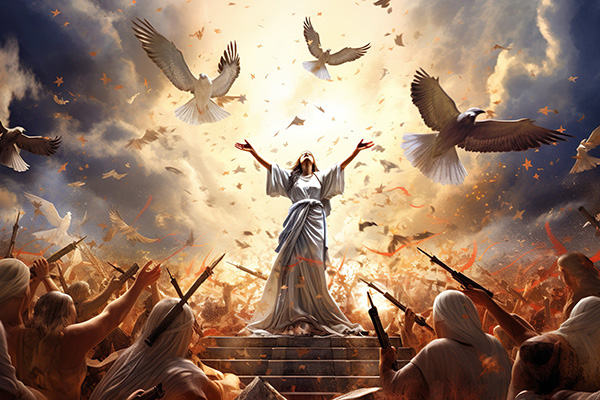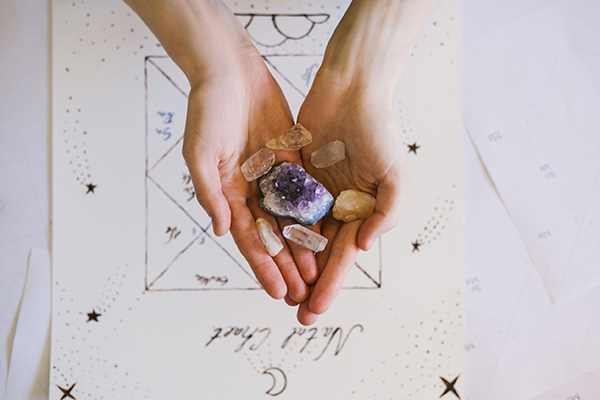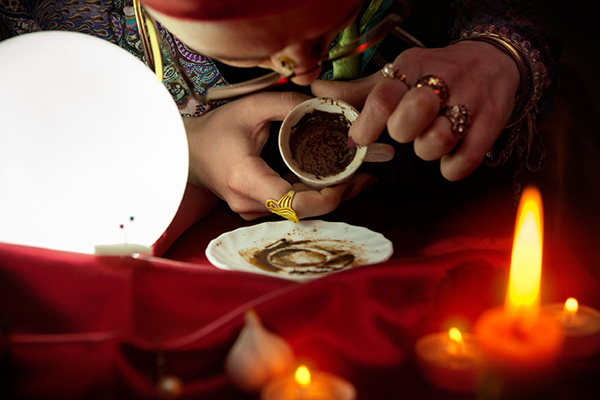Investigating the Existence of Angels and Miracles in Combat Environments
 I recall how my grandfather would share with my mother the horrors of World War I. He was a young soldier then, battling for his nation amidst the trenches of France. My favorite part was the intriguing tales he recounted about the Angel of Mons.
I recall how my grandfather would share with my mother the horrors of World War I. He was a young soldier then, battling for his nation amidst the trenches of France. My favorite part was the intriguing tales he recounted about the Angel of Mons.
The narrative of the “Angel of Mons” originates from the Battle of Mons, which occurred on August 23 and 24, 1914. During this confrontation, British troops reported witnessing angelic forms or ethereal beings that provided them with divine safeguarding against the German forces.
While some labeled the Angel of Mons as a myth, the general populace preferred to believe that a spiritual force had prevented a German advance. After all, miraculous events can take place anywhere, can’t they? These occurrences were later popularized by Arthur Machen’s fictional tale The Bowmen.
The British Army, as a component of the British Expeditionary Force, confronted overwhelming German troops and faced significant casualties. They had to withdraw as part of the broader retreat to the Marne, which was termed the “Great Retreat.”
Certain British soldiers claimed to have observed supernatural entities during the conflict. These accounts included sightings of figures resembling longbow archers, particularly the ghostly archers from the Battle of Agincourt (1415), as well as celestial warriors.
Some soldiers even reported seeing a figure that resembled St. George, a key character in Christian hagiography, cherished for his steadfast faith, bravery, and the legendary acts attributed to him. His narrative has significantly influenced Christian mysticism and has grown into a symbol of valor and knightly conduct.
According to tradition, St. George was martyred in the early 4th century during the reign of the Roman Emperor Diocletian, known for his hostility towards Christians. St. George was put to death for refusing to renounce his Christian beliefs.
The most renowned legend linked to St. George is that of him slaying a dragon that was tormenting a city while demanding human sacrifices. By defeating the dragon, he rescued the city and converted its inhabitants to Christianity. This beloved tale embodies the victory of good over evil and the strength of faith and bravery. He is typically depicted in artwork as a knight in armor vanquishing a dragon, underscoring his role as a heroic and saintly figure.
St. George is the patron saint of several nations, such as England, Georgia, and parts of Portugal and Spain. He is predominantly associated with England, recognized as the national patron saint. The flag of England, known as St. George’s Cross, features a red cross on a white backdrop. He is also the patron saint of various factions and professions, including soldiers and chivalric orders.
MASS HYSTERIA OR DIVINE INTERVENTION?
Was the Angel of Mons a manifestation of divine intervention arising from the sorrow of the spiritual realm at the dreadful atrocities occurring on the battlefields of France? Or was it merely an instance of mass hysteria fueled by extreme trauma and the fight for survival?
Mass hysteria, also known as mass psychogenic illness, represents a phenomenon where a collective group experiences similar physical or emotional symptoms simultaneously without identifiable physical origins. Such conditions are typically sparked by psychological factors like stress, anxiety, fear, or an overarching threat. Common symptoms may encompass dizziness, nausea, headaches, fainting, and other unexplained physical responses. Mass hysteria frequently spreads swiftly within a community, especially in tight-knit groups, and can be shaped by social and environmental elements.
A lesser-known aspect of mass hysteria includes supernatural perceptions or mystical experiences. There have been cases where a community under considerable psychological pressure or fear collectively reports witnessing or experiencing supernatural events, such as visions of mystical entities, apparitions, or otherworldly episodes.
Three renowned documented cases of mass hysteria involving supernatural or mystical perceptions are:
THE SALEM WITCH TRIALS (1692-1693)
A series of hearings and prosecutions were conducted against individuals accused of witchcraft in Salem, Massachusetts. The hysteria erupted when a group of young girls claimed to be possessed by the devil and implicated several local women in witchcraft. The community’s belief in the supernatural, coupled with prevailing social tensions, resulted in widespread panic, leading to the execution of 20 individuals and the incarceration of many others.
THE DANCING PLAGUE (1518)
In Strasbourg, France, a large number of individuals began dancing uncontrollably and seemingly for no apparent reason. The dancing mania escalated quickly, with participants unable to cease their movements until they collapsed from fatigue. Some historical narratives suggest that those affected believed themselves to be cursed or possessed, attributing the occurrence to supernatural causes. Varied explanations have been proposed, including stress-induced psychogenic illness and ergot poisoning, but the precise cause remains uncertain.
THE TANGANYIKA LAUGHTER EPIDEMIC (1962)
In a village in Tanganyika (now Tanzania), a laughter epidemic erupted at a boarding school administered by missionaries. The phenomenon began with a few students and swiftly spread, impacting hundreds in the vicinity. Symptoms encompassed uncontrollable laughter, crying, and fainting that persisted for weeks or even months. Initially suspected to be the result of a viral infection, no physical cause was ever established. This incident is now regarded as a classic example of mass psychogenic illness, instigated by stress and societal pressure, with laughter and other symptoms disseminating through suggestibility and social contagion.
Scientific explanations for such shared mystical experiences often frame them as mass delusions or communal hallucinations shaped by societal and cultural impacts that propagate rapidly within a group, resulting in a collective belief in the occurrence of supernatural events. The psychological mechanisms underlying mass hysteria are said to lead individuals to misinterpret or exaggerate normal sensory perceptions, allowing for the interpretation of supernatural phenomena. Yet, I hold a different perspective on this issue.
WHY I BELIEVE MY GRANDFATHER
My grandfather was a highly rational, practical individual. He certainly wasn’t one to indulge in fanciful stories about angels and such. Nevertheless, he firmly believed throughout his life that the Angel of Mons had manifested to the soldiers on that battleground. I stand with his conviction that it was a genuine divine intervention rather than simply a case of mass hysteria for numerous reasons.
There exists a multitude of firsthand testimonies from soldiers who witnessed the Battle of Mons. These accounts are remarkably consistent, portraying angelic figures safeguarding them. The uniformity of these narratives adds credibility to the assertion that something extraordinary transpired on that battleground.
Cynics argue that the soldiers were influenced by Arthur Machen’s The Bowmen, but those who claimed to see the angels could not have been aware of that tale, as it was published later, after the initial reports. This implies that the sightings were not merely shaped by a fictional narrative, but represented reports of independent experiences.
Moreover, in contrast to conventional instances of mass hysteria, the soldiers’ portrayals of the angelic beings were composed and coherent. The soldiers conveyed feelings of tranquility and protection rather than the fear or chaos typically associated with mass hysteria. Additionally, there were no environmental or physiological factors at play at the scene, such as gas exposure or mass poisoning, that could rationally explain the widespread and simultaneous visions among the troops.
The event reportedly had a considerable effect on the morale of the soldiers. It bolstered their determination and possibly aided in their ability to maintain their position, even with overwhelming odds against them. The favorable outcome of the engagement, despite the challenging circumstances, can be interpreted as evidence of divine support.
The miracle of the Angel of Mons holds significant meaning for me due to my vocation as a spiritual counselor. Over the years, I’ve had the privilege of witnessing and experiencing numerous everyday miracles and divine interventions in my life and my clients’ lives. These occurrences have profoundly shaped my understanding of the supernatural and the potential for divine influence in our reality.
In my practice, I’ve observed instances where seemingly insurmountable situations resolve in ways that defy conventional explanations. These miracles frequently encompass unexpected changes that can only be characterized as divine intervention. Such events have reinforced my conviction in the presence of spirit and the divine actively involved in our existence.
Many clients have shared their own accounts of miraculous happenings, ranging from rapid healings to unexplainable solutions to significant life challenges. The common element in these narratives is a deep sense of divine presence and intervention, aligning with the experiences expressed by soldiers at the Battle of Mons.
OTHER MIRACLES ON BATTLEFIELDS
Throughout history, numerous accounts of mystical phenomena and divine interventions during battles have emerged, often recounted by multiple credible witnesses. Below are a few illustrations:
THE MIRACLE OF THE SUN (1917)
On October 13, 1917, during World War I, countless individuals reported witnessing a solar phenomenon in Fatima, Portugal. The sun was described as dancing, rotating, and radiating multicolored light. Many interpreted this event as a divine sign, closely linked with the Marian apparitions of Our Lady of Fatima. Although it wasn’t a battle, the incident held significance within the war’s context and the hope it instilled in many.
THE BATTLE OF MILVIAN BRIDGE (312 A.D.)
According to Christian lore, prior to the Battle of the Milvian Bridge near Rome, Emperor Constantine the Great experienced a vision of a cross in the sky bearing the inscription “In Hoc Signo Vinces” (In this sign, you will conquer). He supposedly interpreted this vision as a divine assurance of victory. Constantine’s forces triumphed in the battle, which led to his conversion to Christianity and the ensuing Edict of Milan, establishing religious tolerance across the Roman Empire.
THE BATTLE OF AGINCOURT (1415)
In the course of the Battle of Agincourt during the Hundred Years’ War in France, English troops led by King Henry V faced huge numbers of French forces. According to accounts, Henry V and his men found encouragement in visions of angels or saints, and the English claimed a decisive victory against overwhelming odds. This battle has been linked with divine favor due to the miraculous nature of the success.
THE SIEGE OF JERUSALEM (1099)
During the First Crusade, the crusaders besieging Jerusalem were reported to have experienced divine intervention. Some stories depict celestial phenomena and miraculous events that contributed to their success. The capture of Jerusalem was perceived by many crusaders as a sign of divine favor and involvement.
THE BATTLE OF LEPANTO (1571)
In a naval engagement in the Gulf of Lepanto near western Greece, the Holy League (a coalition of Christian states) faced off against the Ottoman Empire, achieving a significant victory. Certain Catholic sources attributed the success to the intercession of the Virgin Mary, asserting that the miraculous outcome was a divine provision to safeguard Christendom.
THE BATTLE OF VIENNA (1683)
During the Battle of Vienna in Austria, a pivotal clash in the Ottoman Wars in Europe, the city was under siege by the Ottoman Empire. The relief troops, made up of a coalition of European forces, were reportedly assisted by a sudden and heavy rainstorm that hindered the Ottoman troops. This storm was viewed by many as divine intervention favoring the defenders.
The Angel of Mons thus serves as just one instance of the broader phenomenon of miracles and divine interventions during times of grave danger to offer protection or guidance. The concept of divine intervention aligns with the notion of miracles. Faith traditions across the globe are replete with accounts of miraculous occurrences that defy natural explanations.
Perhaps science is unable to quantify and precisely elucidate every aspect of the universe. I maintain that the Angel of Mons was a reflection of the transcendent, beyond material and psychological interpretations. In my experience, scientific explanations often fall short in truly comprehending the divine or supernatural experiences encountered daily by millions, including myself and my clients.
For those of us who have faith, the Angel of Mons serves as a potent reminder that we are spiritual entities having a human encounter, and that supernatural events occur daily in the lives of ordinary individuals.
Did heavenly beings genuinely manifest on the battlefields of France to aid the British and French during World War I? Ultimately, the decision rests with you.
|
Lucinda is a well-trained Intuitive and Empath residing in a picturesque village in North Yorkshire, England. She possesses the unique ability to understand the personal pain of her clients and has faced numerous obstacles in her life, which have only made her more resilient! Helping those in need is both her calling and her joy. Whenever she seeks assistance, her Guides are always there to aid her growth and provide clear insights for her clients. Though prediction has been a reliable tool for her to accurately foresee events, Lucinda also leverages her expertise in Dream Interpretation, Numerology, Angel Cards, the Law of Attraction, and Life Coaching to offer comprehensive and detailed solutions to any challenge. A member of AMORC and Beyond Freedom Evolution, she provides inspiration, knowledge, and personal support for spiritual development. If you’re in need of answers or seek to manifest your desires, you can connect with Lucinda at PsychicAccess.com. |
Investigating the Existence of Angels and Miracles in War Zones
Throughout history, many accounts exist of soldiers and witnesses claiming to have encountered angels and miracles in war zones. These remarkable events frequently serve as sources of solace and hope amidst turmoil and despair. Though skeptics may categorize these narratives as mere folklore or hallucinations, the testimonies from those who have experienced these phenomena cannot be easily discounted.
One of the most notable examples of angelic intervention within a battlefield context is the tale of the Christmas Truce during World War I. In December 1914, soldiers from rival factions in the trenches of Belgium and France spontaneously laid down their arms and initiated a momentary ceasefire to celebrate Christmas. Soldiers from both sides stepped into no man’s land, exchanging gifts and singing carols. Many soldiers recounted seeing angels hovering overhead, guiding their actions and spreading a sense of peace and goodwill.
In a similar vein, during the Battle of Mons in 1914, British soldiers asserted they had glimpsed a group of angelic figures shielding them from the advancing German forces. These ethereal entities reportedly protected British soldiers, enabling them to maintain their ground against overwhelming odds. The soldiers firmly believed that divine intervention had spared them from imminent defeat.
More recent conflicts have also seen accounts of miraculous occurrences defying logical explanation. One such occurrence emerged during the Gulf War in 1991 when American soldiers reported seeing a mysterious figure clad in white robes who seemed to guide them through the perilous desert landscape. This figure, often designated as the “Desert Angel,” offered reassurance and comfort to soldiers, leading them to safety and helping them identify concealed landmines.
Another astonishing account originates from the Battle of Wanat in Afghanistan in 2008. In the midst of a fierce firefight, a contingent of U.S. soldiers found themselves outnumbered and heavily targeted. Suddenly, a dust storm enveloped the area, obscuring the battlefield and allowing the soldiers to regroup and push back the enemy. Numerous soldiers interpreted this abrupt change in weather as a miraculous act, providing them with a crucial advantage.
Although some may find these stories extraordinary, they emphasize the influence of faith and the inherent human desire for hope amidst adversity. In the face of war’s atrocities, the presence of angels and miracles serves as a reminder of the greater forces at play. These accounts bring comfort to soldiers and their families, illuminating a flicker of hope in despairing situations.
Nevertheless, it is essential to approach these narratives with a discerning mindset. The chaos of battle, coupled with stress and trauma, can lead to misinterpretations and exaggerations. It is plausible that some accounts stem from psychological phenomena, such as hallucinations or the brain’s propensity to detect patterns and meaning in disorderly circumstances. Additionally, cultural and religious backgrounds can affect how individuals interpret events, leading them to perceive supernatural happenings in the absence of actual occurrences.
Regardless of the rationalizations behind these experiences, they undeniably have a substantial effect on those who witness them. The presence of angels and miracles within battlefield settings offers soldiers a sense of comfort, strength, and hope. Whether these events are divine interventions or constructs of human imagination, their importance lies in the constructive impact they impose on the lives of those experiencing them.
In summary, the exploration of angels and miracles in battlefield contexts remains a topic that continues to enthrall and motivate people. While skeptics may dismiss these accounts as mere myths or delusions, the testimonies from soldiers and other witnesses cannot be disregarded. Whether these episodes signify divine interventions or psychological experiences, they provide a spark of hope and comfort amidst chaos and despair. Ultimately, investigating these extraordinary occurrences showcases the resilience of the human spirit and the potency of faith. Continue reading















